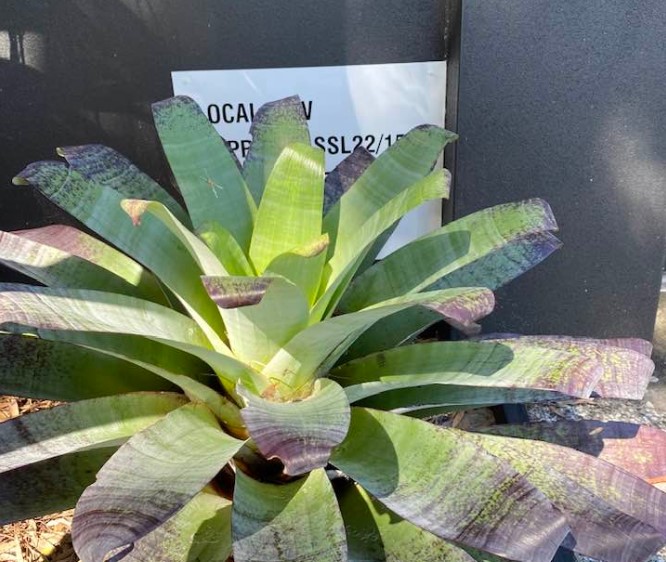This month Noosa Council responded to one of the defining challenges of our time with a new Housing Strategy endorsed in a special meeting of Council. Out in the community, where the pain is sharp and real, the response is mixed to say the least. In some quarters, there’s alarm.
First, there is subdued applause for what appears to be a genuine attempt to do something locally about a housing crisis that is a national problem. And there is acknowledgement that the strategy seems to defend at least some of the principles of our ‘population cap’ and our emphasis on environment and lifestyle.
Read the Council’s version of the strategy here.
Now to those alarms.
Alarm 1. Going up, but how far?
The first alarm is ringing over suggestions of increased height limits by one storey in three places;
- The main business centre and Council car parks of Tewantin. (to 3 storeys)
- Noosa Junction, including the old Bowls Club site and the main shopping strip (to 4 storeys)
- Noosa Civic, identified for high density Residential and Major Business (to 4 storeys)
Those supporting the changes suggest that in some cases another level of ‘affordable’ apartments is possible without an overall increase in heights, and that the “visual impact can be controlled”.
Historically, Noosa’s Planning Schemes have allowed up to four storeys in the Tourism Accommodation zone and some High Density Residential areas. As the argument goes…”the proposal here is just applying this limit to a few other areas to reflect the emerging trend in building accommodation in highly connected centres that reduce the need for people to own and use a car and to turn shopping areas into mixed use villages.”
But wait a minute. Haven’t we battled since the 80’s for the principle of Noosa retaining a scale of building “no higher than the trees”, and keeping our toes off the slippery slope of more relaxed development height limits under the guise of “responding to a housing crisis”.
Some sceptical locals see this as “incremental creep”. Every concession to denser and higher development is seen by many as a betrayal of Noosa’s long battle. Disturbingly, this amendment slipped through the Special Meeting of Council without a word of dissent. A done deal?
An extra storey here and there. What’s the harm?
We’ll be hearing a lot more about this and how incremental creep works to erode a Town Plan, page by page, street by street.
Alarm 2. Who will pay for our granny flatters?
The Queensland government announced in September that it would open the flood gates to the rental of ‘granny flats’, and our Council appears ready to support this at local planning levels. For some who have watched the STA disaster unfold, open slather to granny flats (Secondary Dwellings) could present a similar ticking time bomb.
- Will we open the gates for a wave of backyard granny flat rentals WITHOUT increasing water, waste and transport infrastructure which are not designed for the increased population?
- With no provision for Council to obtain rates from the occupiers of granny flats (only from the landowner) will this lead to large numbers of new granny flat residents making no contribution to their Council services?
Alarm 3. A subsidy, or a handout for developers?
Suggestions of subsidising affordable housing by waiving or reducing rates, fees and charges remind us of the folly of First Home Buyer grants that simply drove up property prices. If not designed well, ‘price signals’ to the market can quickly become little more than free cash for investors and developers.
In each of these examples the devil will be in the detail. We need a Council that acts with empathy, but also a long-term view of cause and effect, and an absolute commitment to what makes Noosa different.
And then to the elephant in the room.
Looming over any discussion about a local housing crisis is still the evaporation of thousands of permanent rentals caused by the explosion of STA.
After a couple of years of ‘monitoring the situation’ and slowly bringing in Local Laws that have yet to make a discernible difference, the new strategy now suggests it’s time to amend the Noosa Plan to prevent even more STA’s in the already saturated coastal High and Medium density zones. It’s hard to imagine a clearer case of shutting the gate after the horse has bolted, but at least it’s a tacit acknowledgement of the massive harm already done.
Having failed to prevent a coastal STA disaster, the challenge ahead is to prevent this infecting the hinterland, and here at least there are signs that Council is prepared to adapt the Noosa Plan before it’s too late for our rural zones.
The hinterland strategy states that; “Whole-house short term rentals should be limited to infrequent letting of the owner’s principal place of residence.”
Can you feel the heat?
It’s always dangerous to put too much store in what passes for a conversation ‘below the line’ in social media. However, if any councillors think the STA anger out there amongst rate-paying residents is less than white hot, they would be mistaken.
This is the flavour of discussion on the Residents for Noosa Facebook page;
Julia Craddock;
You get the drift. These are not residents known for shouting aggressively on social media.
So the people said something would have to be done,
But their projects did not at all tally;
Some said, “Put a fence ’round the edge of the cliff,”
Some, “An ambulance down in the valley.”
Joseph Malins (1895) – The ambulance down in the valley. A poem about prevention.
This excerpt from a 128-year old poem could have been written about Noosa Council’s response to the Short Term Accommodation tsunami that’s already swamped our coastline with hotel businesses in residential streets where there used to be homes.
In our shire, there are now 5,265 ‘dwellings’ that have become STA businesses. That’s one in every 4.5 homes. On the coast it’s often one in two. Our coastal streets have morphed into an asset class for – mostly – wealthy interstate investors. Places where local essential workers – those who grease the wheels of our economy and create what we call a ‘community’ – simply can’t afford to rent.
Nearly 5,000 of our houses and apartments are unoccupied on any given night (according to the latest census), and that doesn’t count motels and resorts. Swathes of our coastal suburbs lurch madly each week from party mode to ghost town and back again.
Having failed to build a fence on our housing cliff to prevent this catastrophe, we have parked an ambulance at the bottom.
The Local Laws designed to give some measure of protection to long suffering neighbours of STA businesses are too little, for many too late, and in a number of cases either circumvented or disregarded completely.

The STA issue is not one that can be hidden as easily as this sign in a local street.
One or two in our Council are already fully in electioneering mode even though it’s 15 months to the next local vote. Their campaigning and voting records (rather than promises and platitudes) will be increasingly scrutinised.
STA is no longer a sleeper issue in Noosa. It’s becoming as loud and distracting as a party house next door, and that noise is unlikely to die down in the next 15-months.


This Post Has One Comment
Totally agree. STA’s have decimated the local long term rental market. To “develop” new and exciting housing options outside the established Noosa plan to try to alleviate the consequences of this out of control group is ridiculous and a sop to developers. Let’s simply stop any new STA’s, establish just which are legally here now, institute an increase in Council rates to them to ensure they pay for the increased use of Council facilities and the biggie, institute a bed tax (just like in everyones favourite comparison locale), Europe! John Duke